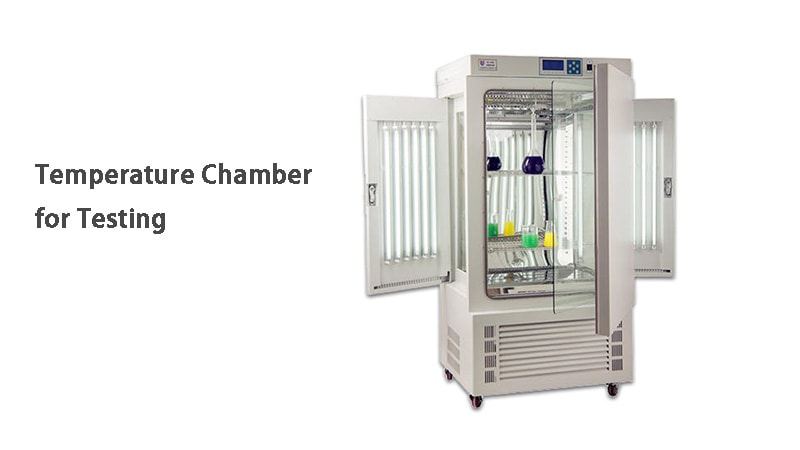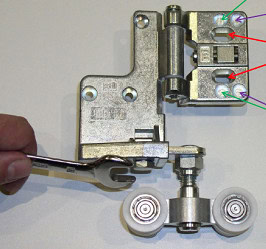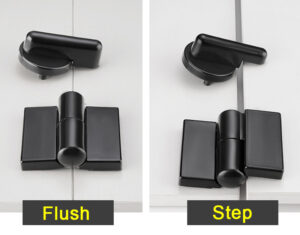Ever pondered over the question, “What is a temperature chamber for testing?” Are you curious to dig deeper and unveil the mechanisms behind the devices that ensure the quality of the products we use daily? You’ve come to the right place. We’re about to embark on a journey exploring the world of temperature chambers.
A temperature chamber is a crucial testing equipment used to examine how products, materials, and components will react under extreme temperature conditions. Whether it’s the scorching heat of a desert or the freezing cold of a tundra, these chambers meticulously recreate these conditions to ensure products can withstand all temperature extremes.
Now, you may be wondering why this knowledge matters to you. By understanding the functionality of temperature chambers, you’ll gain a newfound appreciation for the rigorous testing that products undergo before they reach your hands. Are you ready to dive into this captivating subject? Let’s go!

How Does a Temperature Chamber Operate?
Delving into the operations of a temperature chamber, we discover a symphony of components and processes. Heating and cooling systems, controllers, and sensors play the primary roles in these intricate machines.
The heating and cooling systems work in harmony to create the desired temperature conditions inside the chamber. With the help of heating coils and refrigeration systems, these chambers can simulate temperatures ranging from extremely hot to extremely cold.
Controllers are akin to the brains of the operation. They use specific algorithms to maintain the set temperature conditions in the chamber. Sensors continuously monitor the conditions and feed this data back to the controller. If the conditions deviate from the set parameters, the controller adjusts the heating or cooling elements accordingly.
What are the Different Types of Temperature Chambers?
Temperature chambers come in various shapes and sizes, tailored to the needs of different industries. Benchtop temperature chambers are compact and perfect for laboratories with limited space. Walk-in temperature chambers are larger and are used when testing large items or performing tests on multiple items simultaneously.
Certain temperature chambers are designed to perform highly specialized tasks. For instance, thermal shock chambers can quickly switch between extremely high and low temperatures to test how products react to sudden thermal changes.
What Products Are Tested in Temperature Chambers?
Temperature chambers have an essential role across various industries, testing everything from electronics and automotive components to cosmetics and pharmaceuticals. Let’s take a closer look at a few examples.
In the automotive industry, parts like engines, batteries, and brake systems are tested to ensure they can withstand temperature changes. Electronics are tested to verify that they can operate effectively under different temperature conditions. Pharmaceutical companies use temperature chambers to test the stability of drugs and vaccines under various temperature conditions.
How is a Test Conducted in a Temperature Chamber?
The process of conducting a test in a temperature chamber is meticulously designed to ensure accurate and reliable results. The product or component to be tested is placed inside the chamber, and the desired temperature conditions are set on the control panel.
As the test progresses, the product is exposed to varying temperature conditions. This can range from steady-state conditions to cyclic conditions where the temperature fluctuates between extremes. The product’s reactions to these conditions are monitored and recorded.
The duration of the test can vary based on the product and the nature of the test. It can last anywhere from a few hours to several weeks or even months.
What Standards Govern the Use of Temperature Chambers?
Temperature chambers are governed by various industry standards to ensure consistent and reliable test results. These standards provide guidelines on aspects such as the size of the chamber, the range of temperature it can simulate, and the accuracy of the temperature control.
Some widely used standards include IEC 60068 and ASTM D4332. Compliance with these standards is essential to ensure the accuracy of test results and the safety of the testing process.
Conclusion
To wrap things up, a temperature chamber is an unsung hero in our product-driven world. It is a sophisticated piece of equipment designed to simulate various temperature conditions to test and validate the resilience of products and components. The next time you use a product that withstands extreme temperature conditions, remember the rigorous testing it underwent in a temperature chamber. And don’t forget – there’s always a fascinating story behind every device we use, and every product we consume. Stay curious, and keep learning!
You might also be interested:







